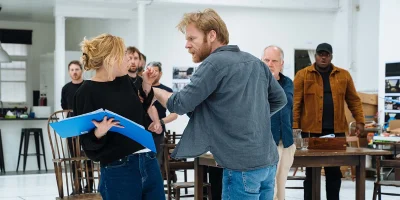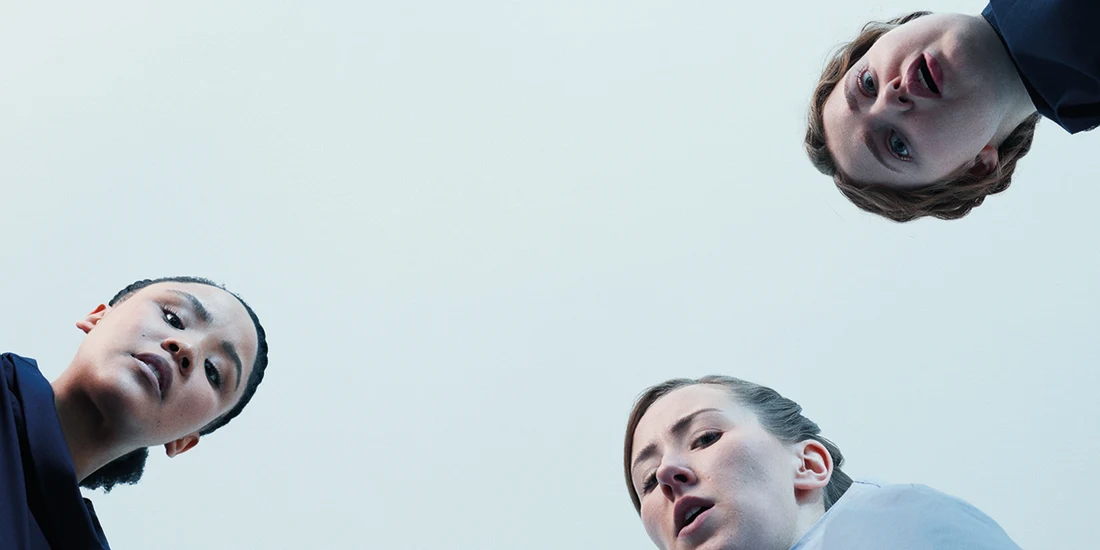
Everything you need to know about Arthur Miller's 'The Crucible'
Learn more about Arthur Miller's play, The Crucible, and get tickets to see The Crucible at the Gielgud Theatre in summer 2023.
“The Crucible was an act of desperation.” So wrote Arthur Miller in an essay for The New Yorker in 1996, as he reflected on the origins of his powerful play about the 17th-century Salem witch trials – an analogy for the contemporary horror of Senator Joseph McCarthy’s reign of terror. “All the old political and moral reality had melted like a Dali watch,” recalled Miller of that late 1940s-1950s period. “Nobody but a fanatic, it seemed, could really say all that he believed.”
One test of a truly great work of art is whether it continues to feel resonant, to tap into some universal truths that apply to our lives today – and Miller’s towering work absolutely does. Revived numerous times over the decades, adapted for film, and analysed by countless students, it has become a seminal piece in theatre, and yet one that still shocks anew.
That was definitely the case when Ivo van Hove mounted his Broadway production in 2016, and now the National Theatre brings us their first major revival since 1990, directed by Lyndsey Turner and starring Erin Doherty, Brendan Cowell and Eileen Walsh. Get prepped for this exciting opening with our definitive guide to The Crucible.
The origins of The Crucible
The Red Scare, said Miller, “paralysed a generation”. Its particularly virulent and destructive voice was that of a Republican senator, Joseph McCarthy, who shot to fame in 1950 when he gave a provocative speech asserting that he had a list of members of the Communist Party and those in a spy ring – all employed by the State Department. McCarthy continued his unfounded allegations about Communist infiltration, stirring up paranoia about “enemies within”, adding the US Army and the administration of President Harry S. Truman to his list.
It was a weaponisation of the country’s fears about the prevalence of Communism in the Soviet Union, Korea and China. Following McCarthy’s wild claims – and the public response – the Senate set up the Tydings Committee hearings, but Republicans refused to accept the committee's conclusion that McCarthy’s accusations were “a fraud and a hoax”.
McCarthy was further emboldened, and began attacking individuals he suspected of being homosexual – and thus, by his logic, more vulnerable to Communist blackmail. In 1953, McCarthy became chairman of the Senate Committee on Government Operations and used his platform to investigate and terrorise people; the term “McCarthyism” was soon coined, referring to bullying, baseless accusations of treason or subversion.
The House Committee on Un-American Activities (HUAC) was also notorious for its persecutions, particularly of Hollywood in the late 1940s, leading to mass black listing. Miller was struck by the “hysterical proportions” of this ideological battle; he himself was asked to sign an anti-communist declaration by the studio Columbia when the film version of his play Death of a Salesman was due to open, to ward off right-wing picket lines. Miller declined.
Miller was then subpoenaed by HUAC in 1956, and cited for contempt of congress because he refused to identify fellow attendees from a Communist writers’ meeting some years back. Although there was a particularly cynical reason behind that summons: the chairman of HUAC told Miller’s lawyer he would cancel the hearing if Miller’s then girlfriend, Marilyn Monroe, would have her picture taken with him. Again, Miller declined.
The plot of The Crucible
Miller realised there were clear parallels between the paralysis he felt during McCarthyism and that descending on Salem during the witch trials. In both cases, words were twisted and weaponised, panic and paranoia ran rampant, and fears were stoked about some hidden conspiracy to undermine civilised life.
In fact, the two were so similar that Miller began to worry the analogy was too overt, and it was certainly a point of contention when his play premiered in 1953. But it has far outlasted that moment in time, as we’ll see with the upcoming National Theatre revival.
The Crucible takes place in Salem, Massachusetts, in the 1690s. Amid feverish rumours of witchcraft, teenager Abigail Williams leads the other girls in dancing naked in the forest and enacting a ritual (Abigail is attempting to curse her rival, Elizabeth Proctor), but she later threatens them not to reveal the truth and to say they were just dancing. Abigail used to work as a servant for the Proctors, and had an affair with John, Elizabeth’s husband.
Abigail then takes advantage of the community’s paranoia and tensions, claiming that the Devil has bewitched them; she and the other girls start accusing various townsfolk of witchcraft, and arrests are made. John knows they’re lying, but can’t reveal it without also revealing his infidelity. An expert in witchcraft, Reverend John Hale, interrogates the Proctors, and a huge legal battle commences, characterised by the same mounting hysteria as the McCarthy hearings.
Significant productions of The Crucible
Jed Harris directed the original production of The Crucible, with Arthur Kennedy playing John Proctor, Beatrice Straight playing Elizabeth, and Madeleine Sherwood playing Abigail. The play has been revived regularly ever since, including with some big-name casts – like the 2002 Broadway production starring Liam Neeson and Laura Linney.
In 2016, Ivo van Hove’s Broadway production – which was led by Ben Whishaw as John, Sophie Okonedo as Elizabeth, Saoirse Ronan as Abigail, Ciarán Hinds as Danforth and Bill Camp as Hale – caused controversy with some of its creative choices.
Although Miller clearly stated that the witchcraft isn’t real, since the tragedy of the play is that people are so fanatically bound by this orthodoxy that they can’t believe the evidence of their senses, van Hove complicated the premise with theatrical tricks that made those supposed supernatural forces tangible. But some critics argued that that was a masterstroke, allowing us to share in the fears that the residents felt, and to understand the extent of their horror.
Miller’s play can also be read now as the perfect distillation of Donald Trump’s post-truth world, where feelings, rhetoric and the demand for partisan loyalty ride roughshod over actual objective facts and laws. Likewise, Brexit-supporting politicians and newspapers here are happy to whip up hysteria and further delusion if it suits their cause.
The Crucible at the National Theatre
We may well see some of those contemporary parallels in this new production of The Crucible.
The Crucible played at the National’s main space, the Olivier Theatre. An intriguing international cast includes Erin Doherty (Abigail), who shot to fame as Princess Anne in Netflix’s The Crown and recently starred in BBC thriller Chloe.
She’s joined by Australian actor Brendan Cowell (John), who impressed in Yerma and Life of Galileo at the Young Vic, and who played Harrag in Game of Thrones. Irish actress Eileen Walsh (Elizabeth) starred in film The Magdalene Sisters and recently led the powerful Girl on an Altar at the Kiln Theatre, while Fisayo Akinade (Hale) is known for Cucumber, Banana and Heartstopper on screen, and for The Antipodes and Antony and Cleopatra at the National Theatre.
Don’t miss this exciting company in action as they bring Miller’s extraordinary play to life for a new generation.
Photo credit: The Crucible (Photo courtesy of production)
Originally published on


